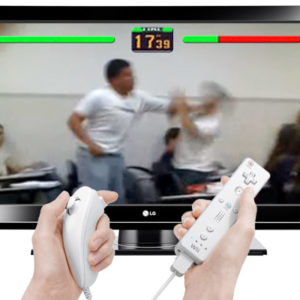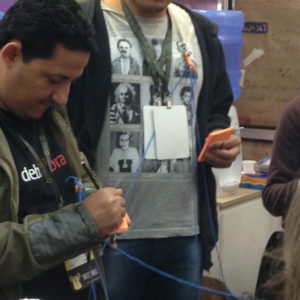Often, videogames are considered the cause of inadequate violent acts. Traditional media prefer to find an easy culprit instead of discussing the broader problem: the origins of urban violence.
The gamer that enacts an inadequate violent act would do it by the influence of videogames. To avoid this behavior, the gamer should not be exposed to violent contents.
But from where does this violent content come from? They come from the same environment they live. The city is big repressive system, where violence is monopolized by the State. Only authorities can use violence. Videogames makes possible simulating being an authority and use violence to see what happens.
Violence is a body language. It´s the limit of one body transgressing the limit of the other. This isn’t good or bad. This is natural to many type of social interactions: sex, education, sports. All of this interactions use violence. Of course there is an acceptable limit and punishment for surpassing it, but…
How could our children and teens know what is the appropriate quantity of violence in a specific situation if they can’t experiment with it?
This type of experiment is instinctive to small mammals. They are fundamental for discovering their own body’s power. Similarly, electronic games are experiments for discovering the cognitive power of the human body.
To discuss the relationship between games and violence, it’s also important to do experiments. That’s why we use games as a medium at Faber-Ludens. Instead of using non-interactive media, we use games to discuss about games, we develop metagames.
We’re now excited with the Nintendo Wii platform because it makes possible using the whole body for interacting with the game, not only the fingertips. Through special sensors, gestures made with all parts of the body can be recognized, at a limited range of movements.
The body as input device proposes some questions to gamers:
- I can press a button and hit my enemies, but can I give a real punch with my knuckle?
- Could I be with my own gestures as violent as I can with a joystick?
- What would my friends think when I punch passionately the air?
- Do I have more adrenaline in my blood now?
- Will my friends perceive that I’m sweating now?
Gesture interface design should be tight coupled with the game’s theme. The feeling of a punch is not the same of a jab. The interface could recognize the difference or not. If I do a more intense gesture and the game doesn’t recognize the difference, then the game is trying to mantain violence light.
That’s why we propose the challenge of designing a gestural game inside the Interaction Design course. A small interface detail like the feeling of a gesture has a big effect in the user/gamer experience, considering the broader cultural context we have mentioned.
Images from some games we’re developing right now:




